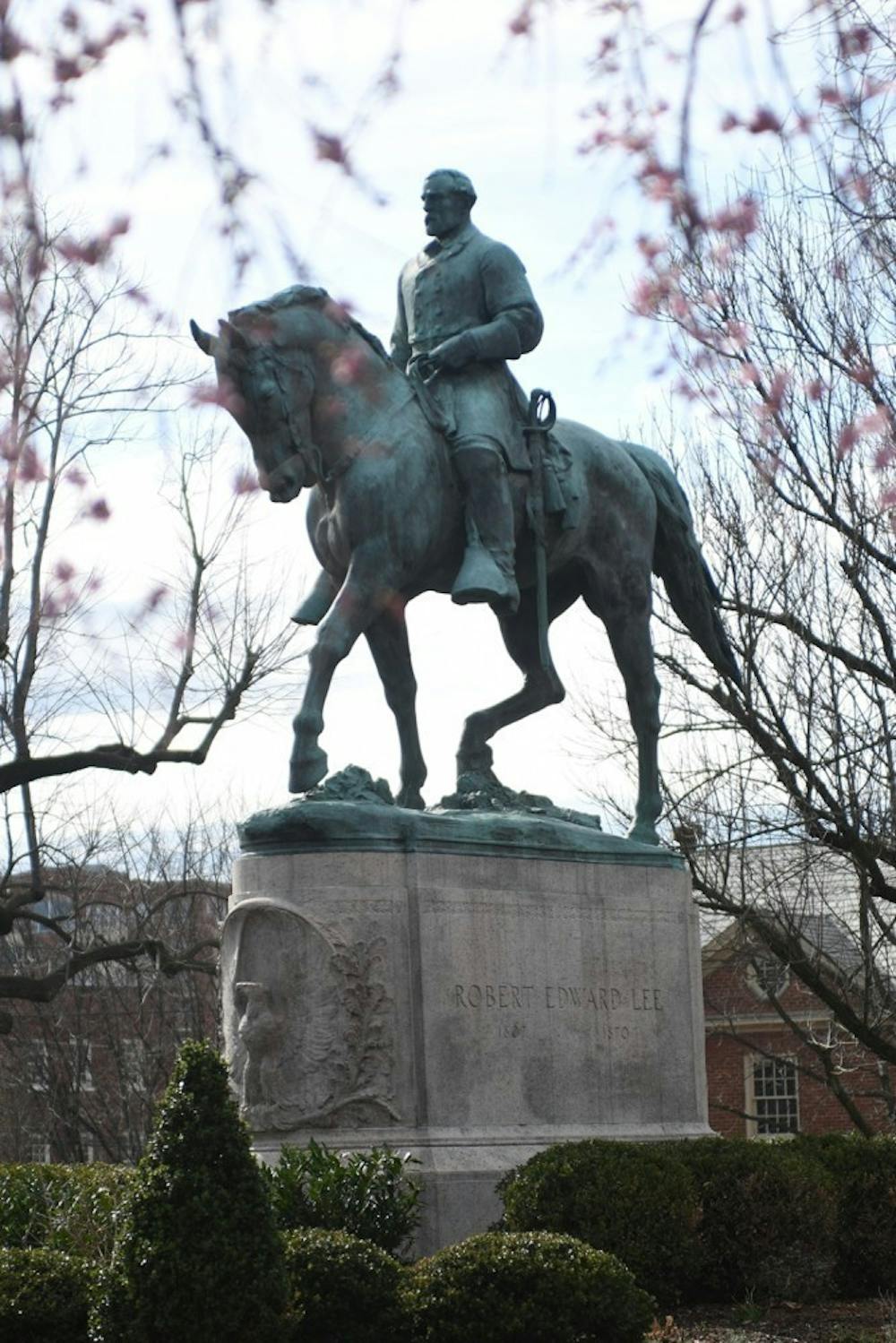In a reversal of previous circuit court decisions, the Supreme Court of Virginia ruled Thursday that the Robert E. Lee statue and Stonewall Jackson statues in Charlottesville were never subject to the state’s previous ban on removing statues.
“In the present case, the statues were erected long before there was a statute which both authorized a city’s erection of a war memorial or monument and regulated the disturbance of or interference with that war memorial or monument,” the Supreme Court judgement reads. “In other words, Code § 15.2-1812 did not provide the authority for the city to erect the statues, and it does not prohibit the city from disturbing or interfering with them.”
State code § 15.2-1812, which was passed by the General Assembly in 1997, bans localities from removing, interfering with and contextualizing or covering monuments without following appropriate guidelines.
The Robert E. Lee statue was first erected in 1924 in Lee Park while the Stonewall Jackson statue was erected in 1921 in Jackson Park. Paul Goodloe McIntire — namesake of the University’s McIntire Amphitheatre, McIntire School of Commerce and McIntire Department of Art — commissioned the construction of the statues and donated the land for the parks.
Second-year College student Zyahna Bryant, then a freshman at Charlottesville High School, wrote a petition in 2016 advocating for the removal and renaming of the Lee statue. Charlottesville City Council voted in February 2017 to pass numerous resolutions removing the Lee statue as well as renaming and recontextualizing Lee Park. The council also voted to rename and redesign Jackson Park. Lee Park is now known as Market Street Park while Jackson Park has been renamed Court Square Park.
One month later, the Monument Fund, the Virginia Division of Sons of Confederate Veterans and numerous individual plaintiffs filed a complaint against the resolutions on the basis that the resolutions violated state code § 15.2-1812. The City argued that because the code was passed in 1997, it could not be applied retroactively to the statues erected some 50 years earlier.
In protest of the Council’s decision to remove the Lee and Jackson Monuments, “alt-right” groups and white supremacists traveled to Charlottesville in 2017, where they marched down the Lawn and held a rally near the Downtown Mall. The rioters killed three people, including activist and Charlottesville resident Heather Heyer, and injured 19 others.
Following the rally, the City placed black tarps over both statues in mourning of the lives lost. A few weeks later, in September 2017, the Council passed another resolution to remove both statues from the parks as soon as possible.
The circuit court provided its ruling on the plaintiffs’ complaint in October 2017, saying that the 1997 code could in fact be retroactively applied to the statues built in the 1920s and that the City did not have the authority to take down the monuments.
The individual plaintiffs then filed another complaint in February 2018, alleging that removing the statues would violate the terms of gifts that conveyed the statues and gifts to the City and that the black shrouds were in “direct violation” of state code §§ 15.2-1812 and 18.2-137. The circuit court ruled in March that the City had to take the tarps down.
Both the Lee and Jackson statues have been vandalized numerous times with messages pointing to the history of enslavement within the U.S.
Last April, Gov. Ralph Northam signed a bill permitting localities to remove, recontextualize or relocate Confederate statues or monuments within their communities — a move which effectively overturned the prohibition on the removal of Confederate war memorials.
On Sept. 12, Charlottesville was the first locality to use this new law to remove the “At Ready” Confederate Statue, known as the “Johnny Rebel” statue, that sat in front of the Albemarle County Courthouse. However, the City was still bound by an injunction that prevented the removal of both the Lee and Jackson statues, pending a decision from the Supreme Court.
The Supreme Court’s ruling Thursday asserted that a “plain language analysis” of state code § 15.2-1812 reveals that the law was only meant to apply to statues erected after 1997, thus excluding both the Lee and Jackson statues. The judgement paves the way for the City to remove the monuments almost four years after the Council’s original vote.
In a tweet Thursday morning, Delegate and Batten Prof. Sally Hudson, D-57, applauded the decision.
“This news marks a huge step in a long struggle,” Hudson said. “Thank you everyone who worked so hard for so long to get us here.”







